In the harsh Massachusetts winter of 1692, over 200 men and women were accused of practicing witchcraft or sympathizing with witches. By the end of 1693, twenty of the accused had been executed for suspected devil worship, and many more perished in prisons or in inescapable poverty.
The Salem witch trials were a deeply disturbing moment of American history that has become associated with injustice and paranoia. More than 300 years later, the story of the Salem witch trials captivates the public and serves as a cautionary tale against rampant xenophobia, religious extremism, and social unrest within a culture.
If you, too, are beguiled by the hunted witches of Salem and their executioners, the volatility of mass hysteria, and the lure of devil magic, the following titles are sure to educate and excite.
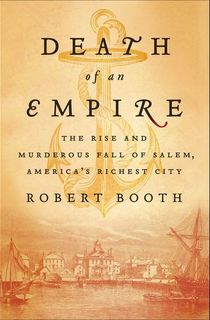
Death of an Empire
Years after the trials, the city of Salem became the city to produce America’s first millionaire and hosted maritime trade that made it one of the wealthiest cities in the nation at the time.
In Death of an Empire, Robert Booth articulates how Westward Expansion and the Industrial Revolution corroded Salem’s political significance. He also discusses what led the city to once again become home to shocking murder and scandal that cemented its infamy as a haunted city.
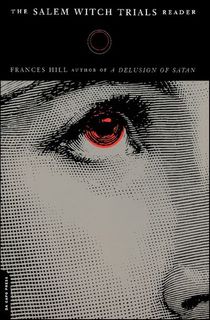
Salem Witch Trials Reader
Amidst growing fear of eternal damnation and the threat of attack from neighboring tribes, the Puritan population of Salem was all too willing to persecute those accused of witchcraft. The Salem Witch Trials Reader details how the actions of a few young girls from Salem led to the deaths and imprisonments of more than a hundred men and women.
Frances Hill analyzes primary sources from the trials, including examinations of witches, eyewitness accounts of suspicious behavior, and the testimonies of those brave enough to defy the hysteria overtaking the town. Hill’s examination of the historical context and common misrepresentations of the Salem witch trials provides an essential and compelling study of the topic.

Salem's Witch House
Of all the landmarks in the internationally dubbed “witch city,” Salem’s Witch House may just be the most significant. John Goff writes about the former home of Judge Jonathon Corwin, whose court was responsible for the execution of twenty people accused of witchcraft in 1692.
As the place where Corwin himself examined the accused witches, Salem’s Witch House is thought to be Salem’s only true historic tie to the trials, unlike many of the tourist attractions found there.
Goff’s history of the Witch House does not end with the trials, however. Salem’s Witch House narrates all of the wars, hardships, and industrial development that the house survived over the centuries and identifies the source of its character and significance.
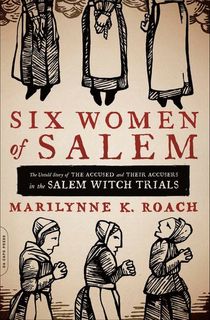
Six Women of Salem
By the end of the witch trials, 207 people had been accused, five died in prison, and twenty were executed. Six Women of Salem is a story about the lives of individual women affected by the trials.
Marilynne K. Roach breaks down the stereotypes and flood of names typically associated with the witch trials and focuses on the experiences of six specific women.
By remembering individual figures from such a sweeping historical phenomenon, Roach allows readers to understand what life may have really been like for women in Salem in 1692.
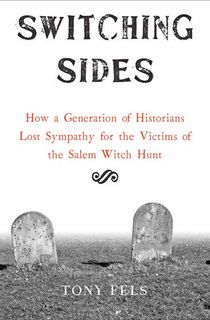
Switching Sides
During the 1960s and '70s, historians began to view the Salem witch trials in a different light. Switching Sides details how historians shifted from condemning the accusatory actions of the common people of New England to defending their hysteria.
Author Tony Fels examines how economic changes, social tensions, racial conflicts, and political developments unsettled the accusers and exacerbated the madness.
Fels illustrates how interpreting the trials in this way encourages sympathizing with the perpetrators rather than the victims—and even inspires hostility towards the accused. Switching Sides is an interesting analysis of the relationship between works of history and ideological influence.

The Witches: Salem, 1692
Both psychologically thrilling and historically accurate, The Witches is a uniquely fascinating account of the Salem witch trials. Stacy Schiff narrates the events of the harsh New England winter when the screams of a minister’s daughter led to the deaths of twenty men and women in less than a year.
Schiff captures the panic, the betrayal, and the suffering that ravaged Salem during these months, turning even the most educated men into paranoid prosecutors and friendly neighbors into executioners.

A Delusion of Satan
A Delusion of Satan by Francis Hill is an examination of the puritanical beliefs and paranoia that allowed the accusation of one woman to spiral into the tragic event that the Salem witch trials became.
Hill’s writing illuminates the horrifying moment in history with gruesome clarity. With descriptions of the accusers who stoked the flames and executioners motivated by vengeance, to the story of the four-year-old witch chained to the walls of a prison cell until she succumbed to madness.
Both an enlightening historical read and a chilling illustration of the darkest parts of human nature, A Delusion of Satan is a must-read.

A Storm of Witchcraft
While most works on the witch trials of Salem focus on the nature of the accusations and the paranoia that drove them, A Storm of Witchcraft seeks to analyze the actual incidents of witchcraft reported by the townspeople.
Young women suffered unseen ailments that left them writhing, screaming, and contorting their bodies. People complained of pins being stuck into their skin and of being haunted by spirits.
Simultaneously, the region suffered from religious crises, outbreaks of illnesses, and fear of conflict on the frontier. Emerson W. Baker studies just how these factors may have contributed to these incidents of supposed witchcraft and the hysteria that followed.
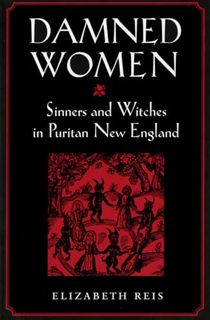
Damned Women
Elizabeth Reis studies the relation between Puritan theology, Puritan evaluations of womanhood, and the events of the Salem witch trials in Damned Women.
By examining how the Puritans embedded women into their beliefs of the devil’s powers, Reis answers questions of why women were accused of witchcraft more often than men, why women frequently accused each other of witchcraft, and why they often confessed.
Despite the Puritan teaching that men and women were equals in the eyes of god, the association of womanhood with evil remained branded in the culture’s mind in a dangerous—and fatal—prejudice. Reis provides a stunning examination of the religious motivations for the persecution of Salem witches and others throughout New England.
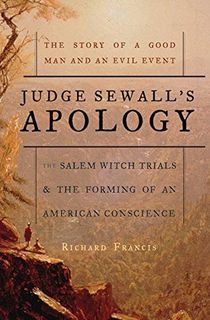
Judge Sewall's Apology
Judge Sewall’s Apology is a fascinating appraisal of Judge Sewall’s personal diaries following his public recanting of the guilty verdicts that led to the deaths of twenty people in 1692.
His personal accounts of daily life in Salem and of the events of the trials allow readers to understand the struggles, fears, and aspirations of the people of New England at this time.
Richard Francis skillfully presents the facts of history alongside the judge’s handwritten confessions and meditations.
Featured image: Wikimedia Commons





